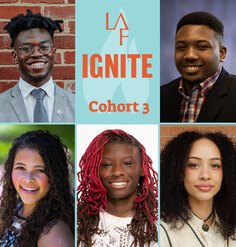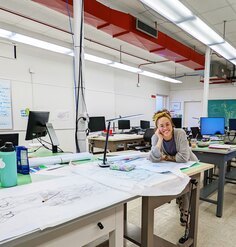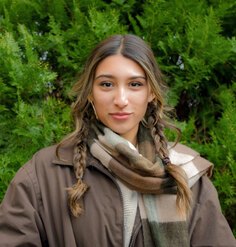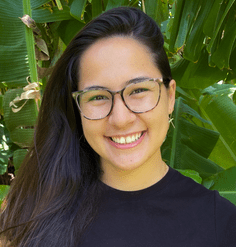Olmsted Scholar Feature: Rediscovering Colombia's Fucha River
By Viviana Castro, 2014 National Olmsted Scholar Finalist
A river that was valued once as a source of life is now channelized to control its contaminated waters, with people fearing it and perceiving it as sewage rather than a natural resource. Rediscovering the Fucha River involves exploring the opportunities of the river as a public space, creating a vision that can change the perception of the river and demonstrate how people can experience its regeneration.
I began this exploration as my senior capstone project with the goal of understating the potential of urban river restoration in Latin American development. Studying this river in particular, however, brought up many aspects that brought a different value to the notion of restoration, where first there needs to be a rediscovery.
Fucha — Muyscubum for “the great female” — was one of the sources of life for the Muysca tribe in the area of Bacata (now the city of Bogotá). The Muysca had a close relationship with the river, seeing it as the place of birth for all life forms. However, as Spanish settlement began to take place, the river was used as a hydraulic source for industries developing in the twentieth century. With this change, the waters began to degrade and the river began to be seen as a source of disposal. Even the term Fucha today can be confused with the Spanish vernacular fuchi, which is a way to describe a bad smell.
The river begins with high water quality as it flows down the steep mountain ranges but begins to degrade as it enters the urban core. By the time it reaches its last stretch, the river has lost its oxygen levels and has received waste from multiple polluting sources.
I interviewed people around the river edge, asking them about their impression of the river. People commented on the constant flooding, contamination, and waste disposal into the river, and compared their experience of the river in the city to the rivers in the countryside, where activities such as paseo de olla (traditional family picnics) take place around the river. How can our culture, and the built environment, contribute to the restoration of the river?
The Rediscovering the Fucha River vision utilizes public spaces as the way to encourage a new attitude towards the river. It takes into account four general scenarios found along the one-mile stretch that repeat along the river edge and illustrates how open spaces, residences, industries, and even how the surrounding truck parking lots can contribute to the restoration of the river.
By illustrating the river through time, we can show the steps that can be taken to help its regeneration. It can begin by allowing and encouraging the river to be observed, demonstrating its value and potential through art and recreational elements. With time, the river can be approached, and eventually, it can be appreciated in its natural state.
The Fucha River runs the risk of losing its meaning and natural function if it continues to be treated as it is today. Rediscovering the Fucha River involves understanding its meaning from the past, its role today, and what it will mean for the future. Overall, this vision aims to serve as an advocacy tool towards reconsidering the value of the Fucha River within the current development of the city. This river was part of our historical values and can be restored to bring our close traditional relationship with rivers to the city. In Bogotá, we can also have a paseo de olla. Let’s recuperate our Fucha River.
To see the full Rediscovering the Fucha River report, visit: http://issuu.com/vivianacastro0/docs/resdiscover_fucha
Viviana Castro recently graduated with a Bachelor of Landscape Architecture (Summa Cum Laude) and a minor in Urban and Regional Planning from the University of Florida. She is currently working at Dix.Hite+Partners in Longwood, Florida.











